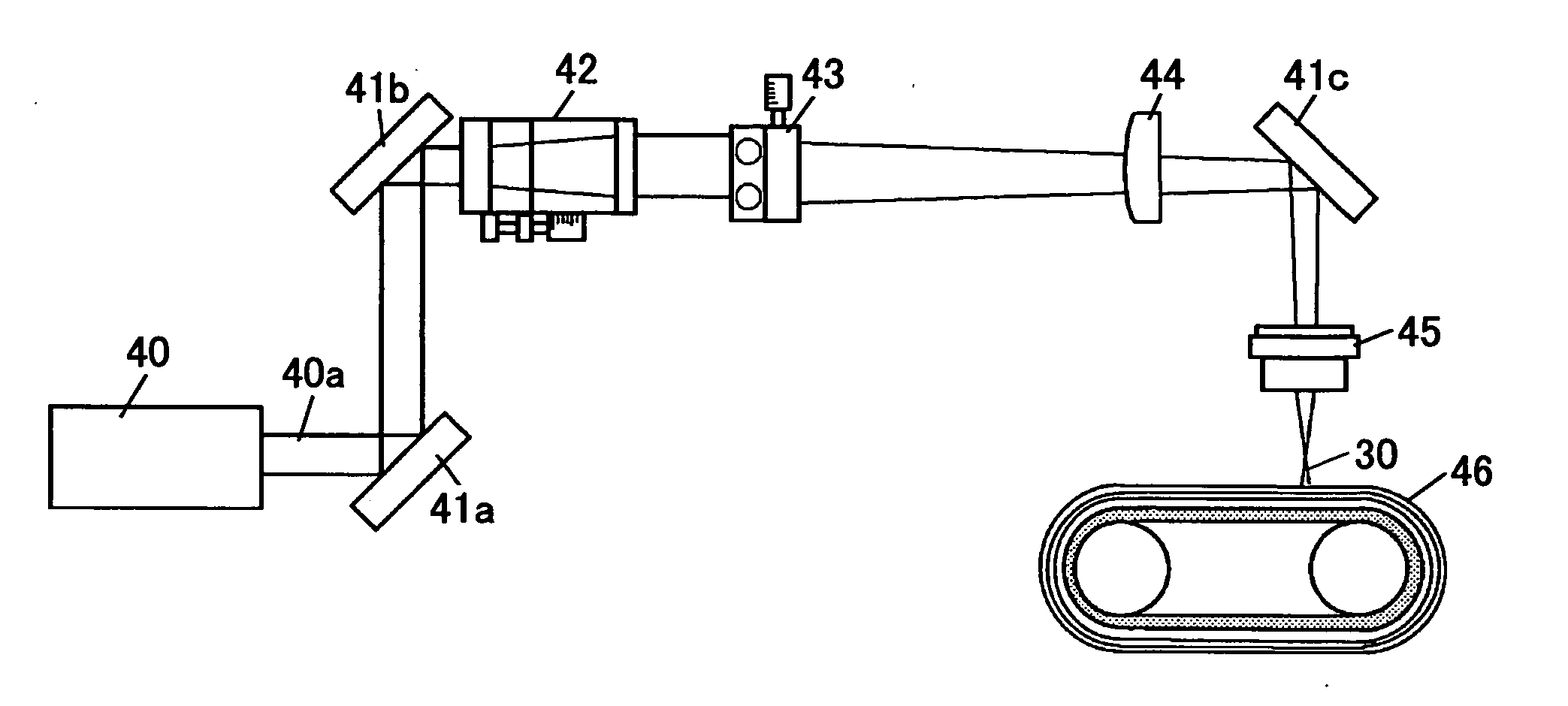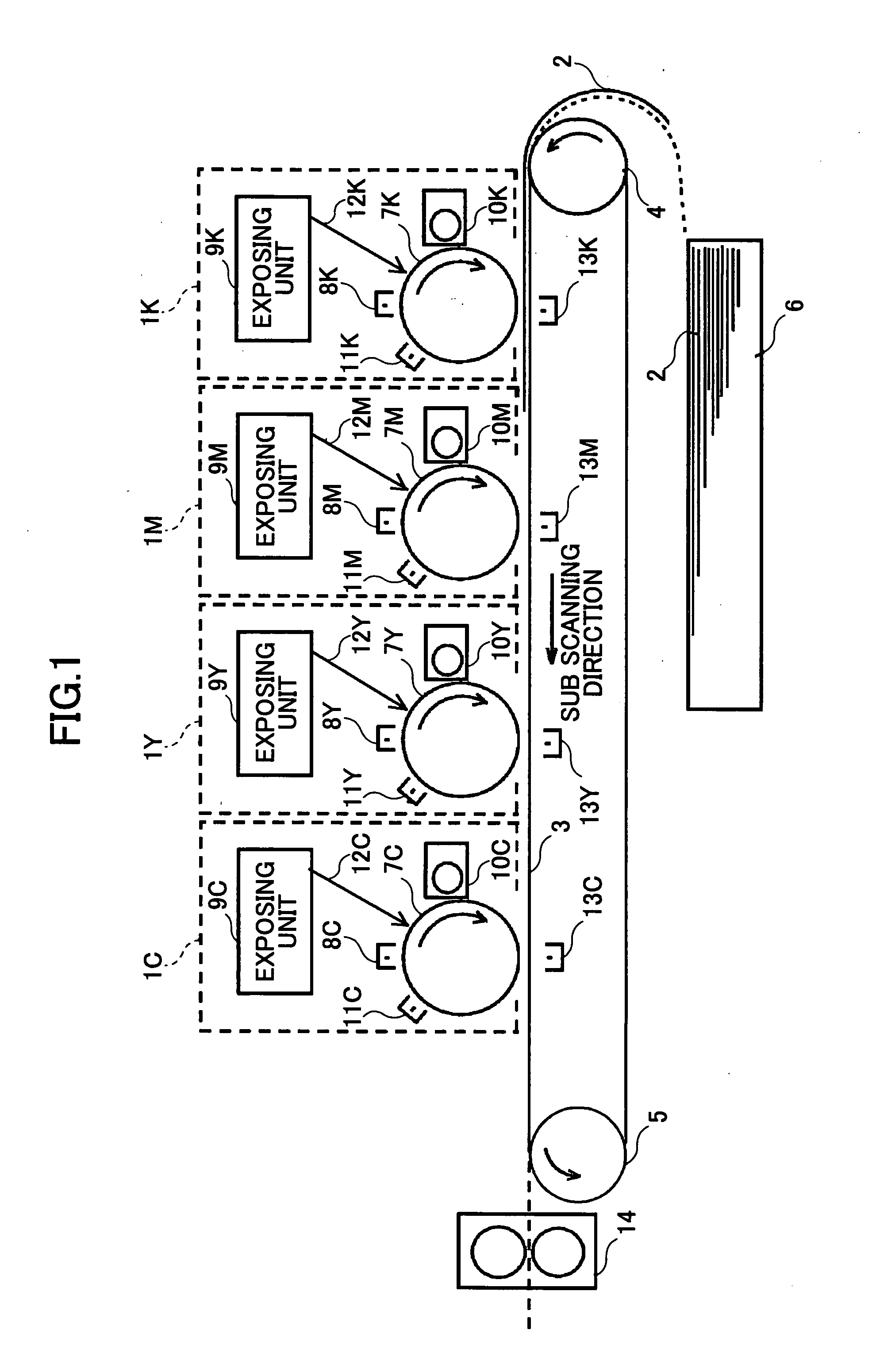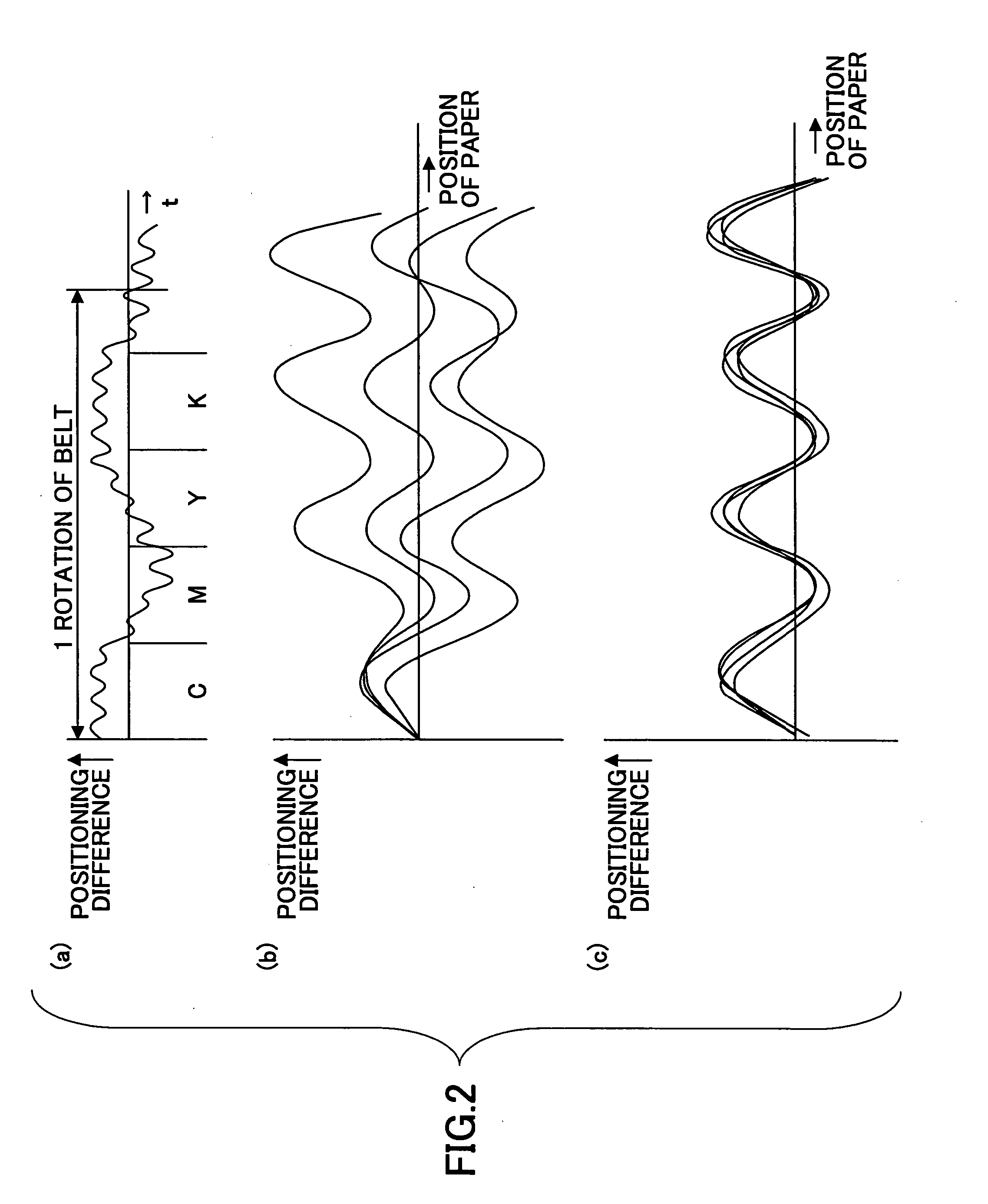Mark forming method for moving body and moving body having mark
a technology of moving body and marking, applied in the field of marking forming method for moving body and moving body having mark, can solve the problems of difficulty in controlling image position difference, high accuracy, specific teaching of forming mark method, etc., and achieves the effect of small stretching, high accuracy, and no decrease in the tensile strength of the moving body
- Summary
- Abstract
- Description
- Claims
- Application Information
AI Technical Summary
Benefits of technology
Problems solved by technology
Method used
Image
Examples
first embodiment
[0087] Again referring to FIG. 4, and further, referring to FIG. 5, a first embodiment of the present invention is explained. As mentioned above, FIG. 4 is a schematic diagram explaining the basic principle of forming a mark. FIG. 5 is a schematic diagram of a laser beam processing device.
[0088] First, the basic principle is explained in more detail. A dispersion material, whose laser beam for processing (30a and 30b) absorbing property is high, for example, titanium oxide particles, is dispersed on a PET resin being a substrate material, and with this, a substrate material layer 32 is formed. The substrate material layer 32 is disposed on a surface of a moving body 31 which is made of, for example, a resin such as a PI (polyimide) resin, a PET (polyethylene terephthalate) resin, and a PVDF (polyvinylidene fluoride) resin, or a metal material such as stainless steel. At this time, the substrate material layer 32 disposed on the surface of the moving body 31 is made of a material wh...
second embodiment
[0097] Referring to FIG. 6, a second embodiment of the present invention is explained. FIG. 6 is a schematic diagram explaining a mark forming method according to the second embodiment of the present invention.
[0098] In the second embodiment, on the substrate material layer 32 formed by dispersing, as in the first embodiment, such as titanium oxide particles on a PET resin, a transparent film 35 made of a material such as a PET resin being transparent for light wavelengths for processing and detecting is disposed. The substrate material and the dispersion material inside the substrate material layer 32 are transformed by a laser beam, for example, an ultraviolet light laser beam, by the same operation as in the first embodiment. In the second embodiment, forming and detecting the marks 35 are executed by the ultraviolet light laser beam transmitting through the transparent film 35. Therefore, the movement of the moving body 31 can be detected by the scattering amount of light for d...
third embodiment
[0103] Referring to FIG. 7, a third embodiment of the present embodiment is explained. FIG. 7 is a schematic diagram explaining a mark forming method according to the third embodiment of the present invention.
[0104] In the third embodiment, a reflection film 37 for a mark detecting sensor is disposed on the lower surface of the substrate material layer 32. At this time, the thinner the substrate material layer 32 is, the greater the effect is. The scattering strength in the substrate material layer 32 is made greater by the reflection film 37.
[0105] Like in the first and second embodiments, positions where the laser beams 30a and 30b are irradiated are transformed in the substrate material layer 32. When the transformed positions of the substrate material layer 32 are detected by an optical sensor, the scattering strength can be increased by disposing the reflection film 37. For example, the marks 33 can be detected by low output light, and with this, the SNR (signal to noise rati...
PUM
 Login to View More
Login to View More Abstract
Description
Claims
Application Information
 Login to View More
Login to View More - R&D
- Intellectual Property
- Life Sciences
- Materials
- Tech Scout
- Unparalleled Data Quality
- Higher Quality Content
- 60% Fewer Hallucinations
Browse by: Latest US Patents, China's latest patents, Technical Efficacy Thesaurus, Application Domain, Technology Topic, Popular Technical Reports.
© 2025 PatSnap. All rights reserved.Legal|Privacy policy|Modern Slavery Act Transparency Statement|Sitemap|About US| Contact US: help@patsnap.com



